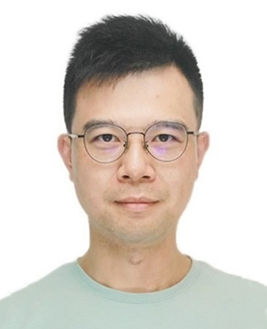
搜索网站、位置和人员

新闻与活动 活动信息
物理主题学术讲座Westlake Physics Seminar | Jian GOU: Finding the novel electronic states in 2D non-layered materials
时间
2024年11月26日(星期二)
上午10:30-11:45
地点
云谷校区E10-211
主持
西湖大学物理系PI何睿华
受众
全体师生
分类
学术与研究
物理主题学术讲座Westlake Physics Seminar | Jian GOU: Finding the novel electronic states in 2D non-layered materials
Time: 10:30-11:45, Tuesday, November 26, 2024
Host: Prof. Ruihua HE, PI of School of Science, Westlake University
Venue: E10-211, Yungu Campus, Westlake University
Lecture Language: Chinese

苟健教授
浙江大学物理学院
Jian GOU, Assistant Professor,
Zhejiang University
主讲人/Speaker:
Dr. Jian GOU is the Hundred Talents Program research professor at School of Physics, Zhejiang University, selected individual of the National Overseas Outstanding Young Talents Project. He received his Bachelor's degree from Sichuan University in 2011, Master's degree in 2014 from the IOE, CAS, and then the Ph.D. from the Institute of Physics, CAS in 2018. After that, he worked as a research fellow in the research groups of Professor Andrew Wee and Professor Wei Chen at the National University of Singapore. His research interests focus on surface and low-dimensional quantum physics, topological materials, 2D ferroelectric and ferromagnetic materials, Scanning Probe Microscopy (STM and AFM), and Molecular Beam Epitaxy (MBE). He Has published more than 30 peer-reviewed papers in top-tier journals, including Nature, Physical Review Letters, Science Advances, Advanced Materials, ACS Nano etc.
摘要/Abstract:
Inspired by the 2D van der Waals materials (e.g. Graphene), 2D non-layered materials are found to be another excellent playground for the study of low dimensional quantum states. In this talk, I will discuss two types of 2D non-layered materials that realized through molecular beam epitaxial (MBE) and characterized by low-temperature scanning probe microscopy (STM/qPlus-AFM). Firstly, I will introduce the successful growth of a 2D semiconducting Kagome analogue (Cr8Se12), and elaborate the colouring-triangle lattice contributed by pz orbitals of surface Se atoms [1]. Secondly, we found, the anisotropic structure of black phosphorous-like Bi (BP-Bi) monolayer enables the creation of a single-layer honeycomb Bi (bismuthene) with various twist moiré superlattices, in which the modulation of topological edge states has been observed [2]. Furthermore, take the advantages of high resolution of qPlus-AFM measurement, we discovered that weak s-p orbital hybridization of Bi facilitates electron transfer between sublattices and in-plane polarization switching in elementary BP-Bi monolayer, thus demonstrates the emergence of novel single-element ferroelectric states in the realm of solid-state physics [3,4].
[1] Nat. Commun. 15, 8940(2024)
[2] Sci. Adv. 6, eaba2773(2020)
[3] Nature 617, 67-72(2023)
[4] Nat. Commun. 15, 8322(2024)
School of Science, Zeyuan LI, Email: lizeyuan@westlake.edu.cn

















